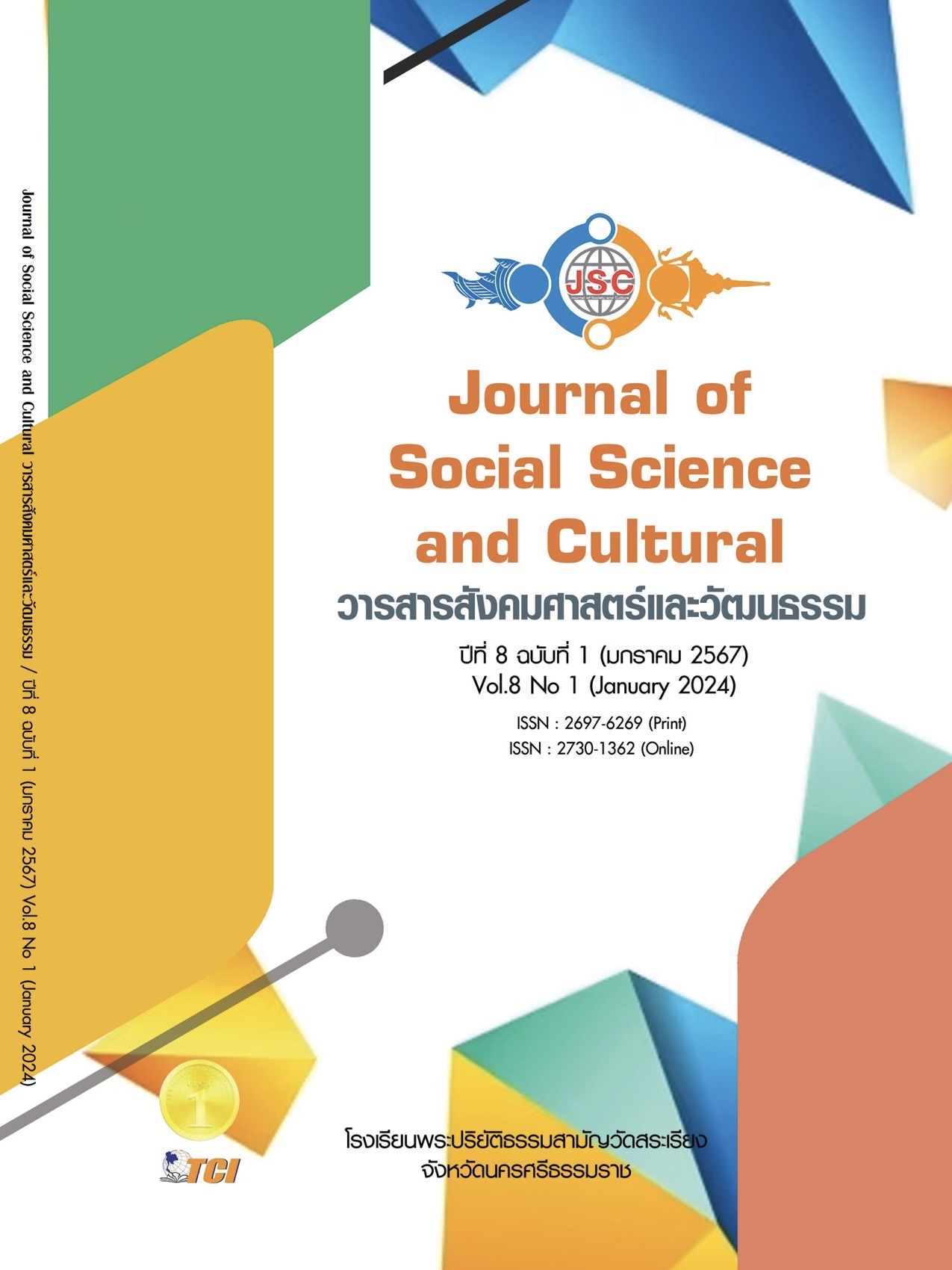THE DEVELOPMENT OF TECHNICAL MATHEMATICS DIAGNOSTIC TEST FOR TECHNICAL EDUCATION STUDENTS AT RAJAMANGALA UNIVERSITY OF TECHNOLOGY KRUNGTHEP
Main Article Content
Abstract
The objective of this research was to: 1) create a diagnostic assessment to pinpoint areas of weakness in mathematical engineering disciplines for students enrolled in the Faculty of Industrial Education at Rajamangala University of Technology Krungthep and 2) assess the efficacy of the diagnostic test in finding deficiencies in learning particular mathematical engineering disciplines among students in the Faculty of Industrial Education at Rajamangala University of Technology Krungthep. This study was quasi-experimental research conducted on a sample group including 212 students from the Faculty of Industrial Education at Rajamangala University of Technology Krungthep. The research tools comprised a diagnostic test that serves as an illustrative and diagnostic tool for finding deficiencies in the comprehension of mathematical engineering courses. Both tests were in the format of multiple-choice questions. The first test aimed to gather information about misunderstandings in each topic, while the second test wss designed as a two-tiered diagnostic test, consisting of one correct option and three distractors. Data analysis was conducted by calculating the frequency percentages. The study's results encompassed: the development of the diagnostic test for assessing deficiencies in understanding mathematical engineering topics commenced by gathering data through a 48-item illustrated examination. The gathered data were subsequently utilised to develop a two-tiered diagnostic examination featuring four multiple-choice alternatives, which were subjected to content validity assessments conducted by three experts. The diagnostic test administered to students in the Faculty of Industrial Education at Rajamangala University of Technology Krungthep to assess their proficiency in mathematical engineering subjects had difficulty indices ranging from 0.25 to 0.80, discrimination indices from 0.22 to 0.81, and a test reliability of 0.72. The test comprised 46 elements after undergoing quality inspections.
Article Details
References
ชวลิต ชูกำแพง. (2550). การประเมินผลการเรียนรู้. มหาสารคาม: สำนักพิมพ์มหาวิทยาลัยมหาสารคาม.
ชวาล แพรัตกุล. (2552). เทคนิคการวัดผล. กรุงเทพมหานคร: ไทยวัฒนาพานิช.
ผกามาศ ชูสิทธิ์. (2556). การศึกษาคุณลักษณะที่พึงประสงค์ของนักศึกษาครุศาสตร์อุตสาหกรรมที่ฝึกประสบการณ์วิชาชีพครู ในระดับอาชีวศึกษาตามความคิดเห็นของสถานศึกษา. ใน รายงานวิจัย. มหาวิทยาลัยเทคโนโลยีราชมงคลพระนคร.
พีระพล จอมใจเหล็ก และคณะ. (2564). การพัฒนาแบบทดสอบวินิจฉัยสี่ลำดับขั้นเพื่อศึกษามโนทัศน์ที่คลาดเคลื่อน เรื่องกระบวนการเปลี่ยนแปลงของโลก ดาราศาสตร์และอวกาศ สำหรับนักเรียนระดับชั้นมัธยมศึกษาปีที่ 3. วารสารนาคบุตรปริทรรศน์, 13(13), 161-170.
ไพจิตตรี กรชม และคณะ. (2562). การสร้างแบบทดสอบวินิจฉัยวิชาคณิตศาสตร์ เรื่องบทประยุกต์ สำหรับนักเรียยนชั้นประถมศึกษาปีที่ 6. e-Journal of Education Studies, Burapha University, 1(3), 1-17.
เยาวดี วิบูลย์ศรี. (2551). การวัดและการสร้างแบบทดสอบผลสัมฤทธิ์. กรุงเทพมหานคร: สำนักพิมพ์จุฬาลงกรณ์ มหาวิทยาลัย.
ล้วน สายยศ และอังคณา สายยศ. (2543). เทคนิคการวัดผลการเรียนรู้. กรุงเทพมหานคร: สุวีริยาสาส์น.
วนิดา หอมหวน และสุชาติ หอมหวน . (2563). การสร้างแบบทดสอบวินิจฉัยพื้นฐานการบวกวิชาคณิตศาสตร์ ชั้นประถมศึกษาปีที่ 4 สำนักงานเขตพื้นที่การศึกษาประถมศึกษาสุรินทร์ เขต 3. วารสารมนุษยศาสตร์และสังคมศาสตร์, 39(4), 82-93.
วิจิตพาณี เจริญขวัญ. (2554). การทดสอบทางจิตวิทยา. กรุงเทพมหานคร: สำนักพิมพ์มหาวิทยาลัยรามคำแหง.
ศิริชัย กาญจนวาสี. (2556). ทฤษฎีการทดสอบแบบดั้งเดิม. กรุงเทพมหานคร: โรงพิมพ์แห่งจุฬาลงกรณ์มหาวิทยาลัย.
สุชานาฎ คำพินันท์. (2559). การสร้างแบบทดสอบวินิจฉัยข้อบกพร่องในการเรียนวิชาคณิตศาสตร์ เรื่องจำนวนเต็ม สำหรับนักเรียนชั้นมัธยทศึกษาปีที่ 1. ใน วิทยานิพนธ์ครุศาสตร์มหาบัณฑิต สาขาวิชาวิจัยและประเมินผลการศึกษา. มหาวิทยาลัยราชภัฏมหาสารคาม.
อนันต์ ศรีโสภา. (2522). ทฤษฎีการวัดและการทดสอบ. กรุงเทพมหานคร: คณะศึกษาศาสตร์ มหาวิทยาลัยศรีนครินทรวิโรฒ ประสานมิตร.
Wiersma, W. et al. (1990). Educational measurement and testing. Needham Heights, MA: Allyn and Bacon.


